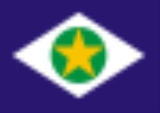
Pontes e Lacerda
Encyclopedia
Pontes e Lacerdais a municipality Brazilian state of Mato Grosso
. Is located 450 km from Cuiaba
, at a latitude 15° 13'34" south and a longitude 59° 20'07" west, with an altitude of 254 meters. Its estimated population in 2006 was 42,429 inhabitants. It has an area of 8,423 square kilometers.
, represented by Nambikwara
. Were virtually decimated by successive incursions of bandeirantes paulistas in the region (18th century) and the mining
boom of the 18th-19th century, which followed the gold exploration of Vila Bela of the Trinity. Already in the twentieth century, suffered from the exploitation of wood, the rubber tappers and farmers with land disputes and grileiros established in the region in the mid-70s. Received harboring the Jesuit priest Antonio Iasi, Jr., who fought for the establishment of the Indigenous Land Sararé, an area of 67,420 hectares currently live about 71 Indians.
The origin of the name refers to the year 1784, when two cartographers and astronomers trained by the University of Coimbra, Portugal, designed the first rough map of the river basins of the Amazon and Plate. They were Antonio Pires da Silva Pontes, a miner, and Francisco Jose de Lacerda e Almeida, a São Paulo.
In 1906, it built the telegraph-pole of Pontes e Lacerda (now restored), at the time of the survey ethnologic, cartographic geographical and biological started the following year by the Commission for Strategic and telegraph lines of Mato Grosso to the Amazon. Led by Marshal Cândido Rondon, the Commission Rondon, as was known, esquadrinhou thousands of miles of land, rivers and geographical coordinates to the Amazon, and then to Acre. The work was completed in 1915.
Until 1976, Pontes e Lacerda was a cluster belonging to the city of Vila Bela of the Trinity, becoming a district that this year, through the State Law 3813. Finally in 1979, through the 4167 state law, was the municipality of Pontes e Lacerda, dismembered them for part of the territory belonging to the village of Bela Trinity.
Mato Grosso
Mato Grosso is one of the states of Brazil, the third largest in area, located in the western part of the country.Neighboring states are Rondônia, Amazonas, Pará, Tocantins, Goiás and Mato Grosso do Sul. It also borders Bolivia to the southwest...
. Is located 450 km from Cuiaba
Cuiabá
Under the Koppen climate classification, Cuiaba features a tropical wet and dry climate. Cuiabá is famous for its searing heat, although temperatures in winter can arrive sporadically at 10 degrees, indeed atypical, caused by cold fronts coming from the south, and that may only last one or two...
, at a latitude 15° 13'34" south and a longitude 59° 20'07" west, with an altitude of 254 meters. Its estimated population in 2006 was 42,429 inhabitants. It has an area of 8,423 square kilometers.
History
The region where today is located in the municipality of Pontes e Lacerda was originally inhabited by IndiansIndigenous peoples of the Americas
The indigenous peoples of the Americas are the pre-Columbian inhabitants of North and South America, their descendants and other ethnic groups who are identified with those peoples. Indigenous peoples are known in Canada as Aboriginal peoples, and in the United States as Native Americans...
, represented by Nambikwara
Nambikwara
The Nambikwara is an indigenous people of the Brazilan Amazon. Currently ca. 1,200 Nambikwara live in federal reservations in the Brazilian state of Mato Grosso along the Guaporé and Juruena rivers...
. Were virtually decimated by successive incursions of bandeirantes paulistas in the region (18th century) and the mining
Mining
Mining is the extraction of valuable minerals or other geological materials from the earth, from an ore body, vein or seam. The term also includes the removal of soil. Materials recovered by mining include base metals, precious metals, iron, uranium, coal, diamonds, limestone, oil shale, rock...
boom of the 18th-19th century, which followed the gold exploration of Vila Bela of the Trinity. Already in the twentieth century, suffered from the exploitation of wood, the rubber tappers and farmers with land disputes and grileiros established in the region in the mid-70s. Received harboring the Jesuit priest Antonio Iasi, Jr., who fought for the establishment of the Indigenous Land Sararé, an area of 67,420 hectares currently live about 71 Indians.
The origin of the name refers to the year 1784, when two cartographers and astronomers trained by the University of Coimbra, Portugal, designed the first rough map of the river basins of the Amazon and Plate. They were Antonio Pires da Silva Pontes, a miner, and Francisco Jose de Lacerda e Almeida, a São Paulo.
In 1906, it built the telegraph-pole of Pontes e Lacerda (now restored), at the time of the survey ethnologic, cartographic geographical and biological started the following year by the Commission for Strategic and telegraph lines of Mato Grosso to the Amazon. Led by Marshal Cândido Rondon, the Commission Rondon, as was known, esquadrinhou thousands of miles of land, rivers and geographical coordinates to the Amazon, and then to Acre. The work was completed in 1915.
Until 1976, Pontes e Lacerda was a cluster belonging to the city of Vila Bela of the Trinity, becoming a district that this year, through the State Law 3813. Finally in 1979, through the 4167 state law, was the municipality of Pontes e Lacerda, dismembered them for part of the territory belonging to the village of Bela Trinity.

